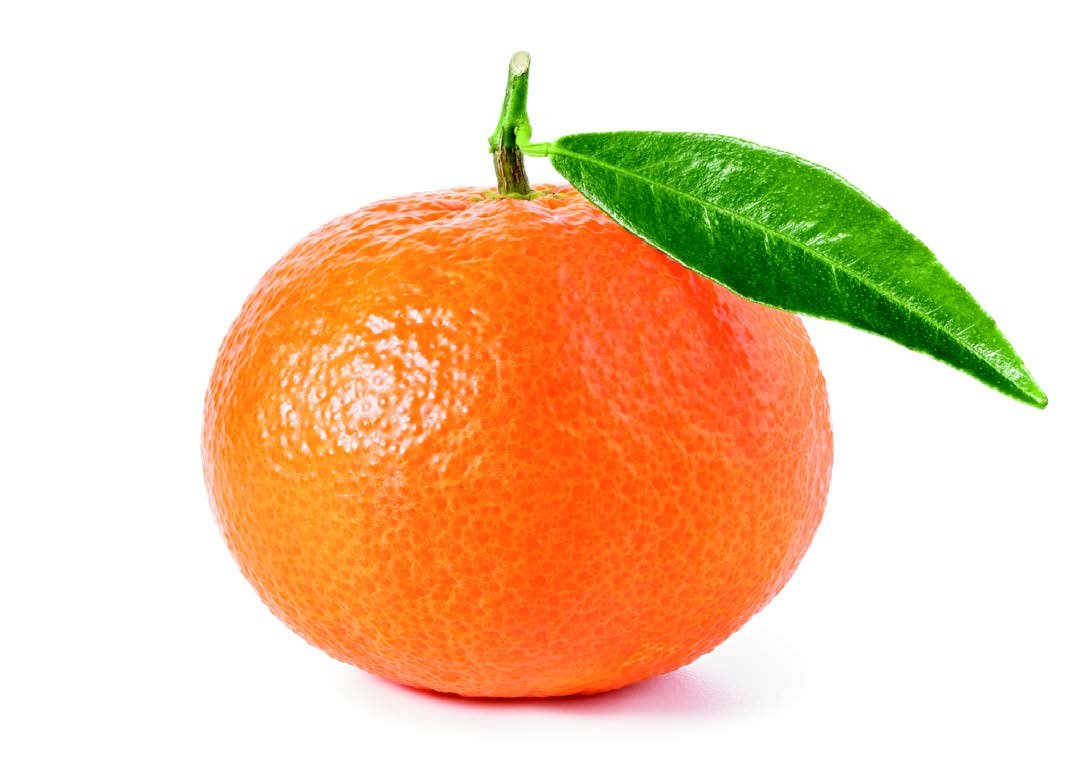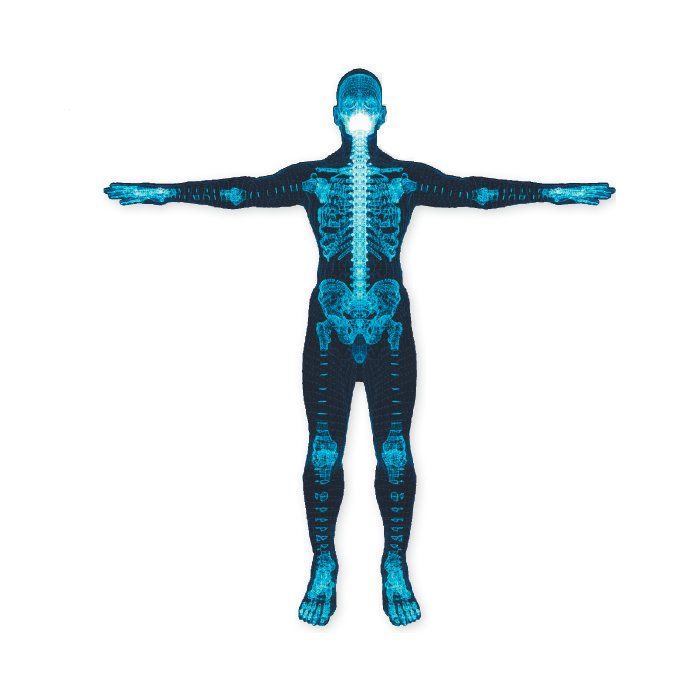Healthy bone is a balancing act. Our bodies continually remove older bone and replace it with new. As adults, if we lose bone at too fast a rate, replace it at too slow a rate, or both, the result is osteoporosis—weak, porous bones that fracture easily. The National Osteoporosis Foundation estimates that nearly 10 million Americans have osteoporosis, and over 43 million more have its precursor—low bone density. The disorder is more common in older than younger people. Fractured bones from this condition can be life-altering, and even life-threatening, but they are not inevitable. There is much we can do to maintain our bones. The earlier we start the better.
What Causes Bone Loss? Bone mass peaks between ages 18 and 25. This peak mass is determined largely by genetics, but nutrition, physical activity, health status during growth, and hormonal and endocrine factors play a role as well. As we age, hormonal changes (particularly menopause); health problems such as thyroid imbalances and digestive disorders; and long-term use of certain medications (including steroids and some heartburn drugs, as well as chemotherapy) all play a role in creating the imbalance that leads to weaker bones. Smoking is associated with lower bone density, as is alcohol abuse. Nutritionally, high salt intake, low calcium intake, and insufficient vitamin D are all associated with higher risk for bone loss, and emerging research suggests other roles for diet as well.
Calcium and Vitamin D: Consuming adequate daily calcium and vitamin D (just as long as you don’t overdo it) is a safe, inexpensive, and evidence-based way to help reduce fracture risk. The bones are the main storage site for calcium, an element which is necessary for many important bodily functions. If we do not get the calcium we need from our diet, the body will take calcium from the bones. Vitamin D plays a major role in calcium absorption. The National Academies of Sciences (NAS) recommends men age 50 to 70 consume 1,000 milligrams (mg) per day of calcium and women age 51 and older and men age 71 and older consume 1,200 mg per day. There is no evidence that intake above these levels provides additional benefits. For vitamin D, the NAS recommends 600 International Units (IU) per day until age 70 and 800 IU per day for those 71 and older, but the National Osteoporosis Foundation recommends an intake of 800 to 1,000 IU per day for adults 50 and older. For both calcium and vitamin D there is evidence that intake above these levels may have adverse effects.

Image © serebryakova | Getty Images
About 75 to 80 percent of the calcium consumed in American diets is from dairy products such as milk, yogurt, and cheese. Calcium is found naturally in plant foods such as dark leafy greens and almonds, and it is sometimes added to processed foods and beverages. Vitamin D is created in the skin upon exposure to the sun’s rays, and is also present to some degree in saltwater fish and liver, and in vitamin D-fortified milk and other fortified foods such as orange juice and cereals.
The use of calcium and vitamin D supplements is controversial. In 2018, the U.S. Preventative Services Task Force concluded that the evidence is insufficient to assess the balance of the benefits and harms of calcium and vitamin D supplementation, alone or combined, for the primary prevention of fractures in most adults, and directly recommended against the use of usual-dose calcium or vitamin D supplements to prevent fractures in community-dwelling, postmenopausal women. Before starting calcium or vitamin D supplements, it is important to discuss the potential benefits and risks with your healthcare provider.
Emerging Ideas: Researchers at Tufts University, led by Bess Dawson-Hughes, MD, director of the Bone Metabolism Laboratory at Tufts’ Human Nutrition Research Center on Aging, are engaged in extensive research on acid-base balance in the body and how it impacts bone health. When food is digested, absorbed, and metabolized, it is broken down into small molecules. Some foods contribute hydrogen ions (H+) which increase the acidity of the blood. “The body needs to keep its acidity level (pH) constant,” says Dawson-Hughes, “and it has a complex system to make that happen.” Bone is a part of that system. “There is a receptor on the bone that triggers an increase in bone breakdown (resorption) when H+ levels in the blood rise,” says Dawson-Hughes. “This process releases alkaline compounds and calcium into the blood. The bone breakdown helps neutralize the acid, but it also weakens bone.”
Research by Dawson-Hughes and colleagues found that adding bicarbonate (an alkali, which neutralizes acid) to the diet reduced markers of bone resorption compared with a placebo. “This experiment leads us to believe that adding foods which are broken down to create alkaline compounds could have a beneficial effect on bone health,” says Dawson-Hughes. Vegetables and fruits (even acidic fruits like citrus) add alkaline compounds to the body. Protein and grains add acidic compounds. “We are not in any way recommending reducing protein intake,” says Dawson-Hughes. “Protein is important to bone and muscle health as we age. It’s the balance that matters. The trick is to reduce grain intake (especially refined grains) and increase fruit and vegetable intake to balance out the grains.” Currently, intake of grains (particularly refined-grains) in the American diet is about twice the recommended amount, and fruit and vegetable intake is below recommendations.
“The bottom line,” says Dawson-Hughes “is that if people adhere to the standard dietary guidelines, they will get the appropriate balance of acid and base, along with plenty of calcium and vitamin D. Our research indicates that the diet that is good for your bones is the same diet that is good for overall health.”
Follow these tips to maximize bone health:
- -Consume dairy products including milk, yogurt, and cheese, and plant sources of calcium such as leafy greens and almonds.
- -Reduce intake of grains (particularly refined grains) and increase intake of fruits and vegetables.
- -Be active: Engage in regular weight-bearing and muscle-strengthening exercise, including walking or jogging, stair-climbing, yoga, dancing, and weight-training.
- -Stop, or do not start, use of tobacco products.

























What impact do diet carbonated drinks or carbonated water have on bone health?
Dark/brown colas are high in phosphorus, which can be detrimental to bone health.
“Excess phosphorus promotes calcium loss from the body when calcium intake is low,”
See: https://www.webmd.com/osteoporosis/features/diet-dangers#2
My PCP recommends consuming fish with bones (sardines, canned salmon…) as a good dietary source of calcium too.
Very knowledgable and insight full article.
thanks for this info. what are the differences in calcium supplements — plant-based vs others?
also, as a result of breast cancer and an osteopenia diagnosis on a follow-up BMD scan, bisphosphonate Rx is an option. I’m looking for research on starting this now 2 years into the AI use, impacts on bone health vs recurrence, and what side effects are likely. I would appreciate any links you can provide. thanks! n
Excellent Report!!!!! I am a 77 year old woman in very good health except for osteoarthritis and osteoporosis. I also have scoliosis (since childhood). All of these conditions became a problem about 5 years ago when
my whole body structure became problematic. I am fairly knowledgeable on proper diet and exercise for my age and conditions, but your report further clarified what I should be doing to stabilize these conditions.
Thank you for a clear and informative report.
What effect does air pollution ( high ozone alert days in Dallas Texas area) have in diminishing the ability to convert sunlight on the skin into Vitamin D? We have many sunny days here, and yet many of my adult patients have low Vitamin D, but we do have Ozone alert days – at which time children are allowed only 10 min of outside play at recess.
MY PCP recommends Vit. D, not D3 for my osteopenia. Why is D bettter than D3?
What are some diet strategies for women over 60 with dairy intolerance? Do substitutes like goat cheese help?
What if for a variety of reasons you are unable to meet the daily calcium requirements and you already have osteoporosis and are being treated with drugs. What is the max. daily amount of calcium supplementation that is safe to consume? And when do the benefits of calcium supplementation outweigh the risks?
If you consume dairy (as recommended above), you should be aware that you’re ingesting pregnant cow hormones (the hormones that stimulate the milk production). Those hormones are designed by nature to put weight on a baby calf rapidly, and they have a strong correlation with hormone-related cancers such as breast and prostate. There are numerous healthy plant-based foods that contain calcium without the cancer risk. Check out the Physicians Committee for Responsible Medicine.
There was no mention of the importance of dietary vitamin K2, which is primarily found in animal-based foods with the exception of natto, I would like to know if vitamin K1 , which is found in leafy greens and cruciferous vegetables is sufficient, if one does not consume food rich in vitamin K2. I have read that the gut microbiome does partially convert vitamin K1 to vitamin K2, but I am not sure this conversion is adequate for reducing the risk of osteoporosis,
@Michael Goodman.. I too am interested in the vitamin Ks and bone health. Prunes happen to be high in vitamin K1 and I rarely see them mentioned as bone foods, If you receive a reply to your inquiry would you kindly inform me as well. Many thanks.
Speaking of prunes and bone health, see https://www.sciencedaily.com/releases/2022/02/220209112110.htm
I was diagnosed with Osteoporosis a few years back and I take a plant based calcium and Vitamin D supplement along with eating almonds and leafy greens regularly. My PCP tests my blood bi annually and I’m in the appropriate range for both.
I also exercise regularly, I feel great and my bone scans seem to be hold steady …not losing or gaining but maintaining.
Thanks for this article. I am lactose intolerant and so I have tried oat, almond, soy milks etc for a whole year now, to finally realize the gellan gum they add -to thicken & maintain the added minerals in suspension – is upsetting my stomach and making me feel like it is taking all my good microbiome with it! I am working now on lactose free milk and this seems to be working, better than suffer from stomach pain after my second cup of organic soy milk, in case it helps someone out there.